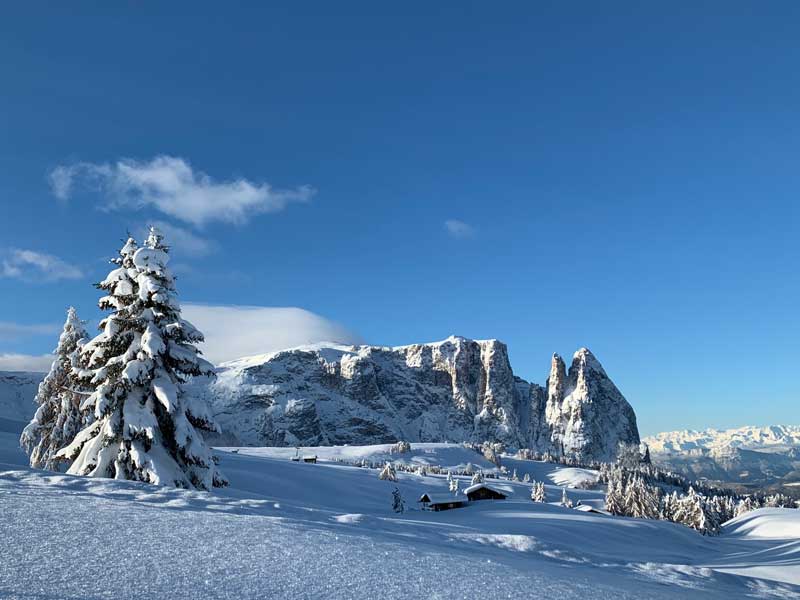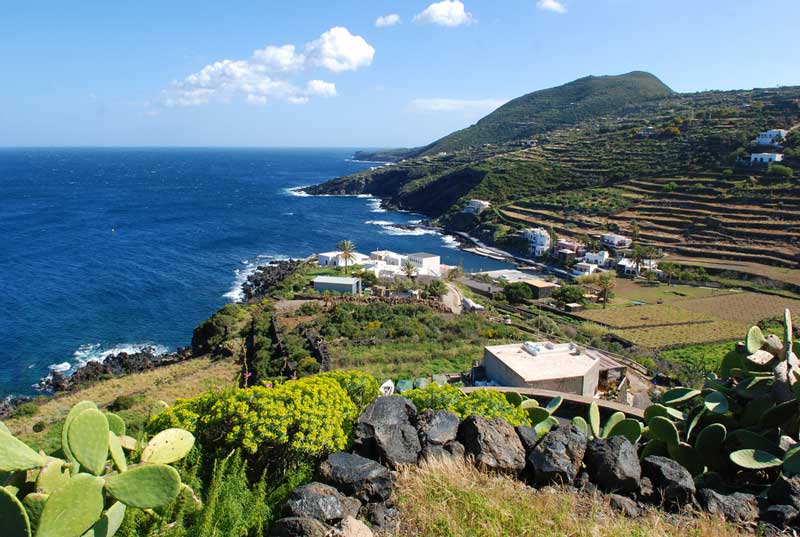Italians have a dynamic approach to travel. They cherish places that offer a blend of natural beauty, cultural richness, and opportunities for both relaxation and adventure. They tend to avoid the typical tourist spots, instead opting for places that offer a more authentic Italian experience.
Italians have a profound appreciation for the arts, often visiting art studios to immerse themselves in the rich tapestry of their cultural heritage.
Their passion for art is matched by a love for culinary exploration. Italians relish the opportunity to try new dishes in restaurants, often experimenting with innovative culinary techniques and ingredients.
Moreover, Italians have a profound love for nature, frequently escaping to picturesque coastal areas and serene beaches. They often enjoy the stunning Mediterranean views and exploring the country’s picturesque villages
Italians have a deep appreciation for the diverse landscapes and rich cultural heritage within their country, often choosing destinations that offer a blend of natural beauty, historical significance, and culinary delights.
Places Where Italians Travel in Italy
Trieste, Friuli Venezia Giulia

Trieste, Friuli Venezia Giulia
Trieste in Friuli Venezia Giulia is a charming city nestled between the Adriatic Sea and the Slovenian border, beloved by Italians for its rich history, cultural diversity, and scenic beauty.
The city boasts a fascinating blend of architectural styles, from Roman ruins to Austro-Hungarian palaces, reflecting its diverse cultural heritage. Visitors can explore iconic landmarks such as the majestic Miramare Castle, perched on a cliff overlooking the sea, and the grand Piazza Unità d’Italia, one of Europe’s largest seaside squares.
Trieste is also famous for its vibrant coffee culture, with numerous historic cafes where locals and visitors alike gather to savor espresso and indulge in sweet pastries. The city’s bustling waterfront promenade, lined with colorful buildings and lively bars, is the perfect place to soak up the Mediterranean atmosphere.
Alpe di Siusi, South Tyrol

Alpe di Siusi, South Tyrol
Alpe di Siusi in South Tyrol is a breathtaking destination loved by Italians for its stunning natural beauty and outdoor activities. This vast alpine plateau offers panoramic views of the surrounding Dolomite mountains, making it a paradise for hikers and nature enthusiasts.
Visitors can explore numerous hiking trails ranging from easy walks to challenging treks, allowing them to immerse themselves in the pristine alpine landscape. In the winter, Alpe di Siusi transforms into a winter wonderland, attracting skiers and snowboarders with its excellent slopes and cross-country skiing trails.
The region is also known for its charming mountain huts where travelers can indulge in delicious local cuisine and warm hospitality. Alpe di Siusi offers a perfect retreat amidst the splendor of the Italian Alps.
Maremma, Tuscany

Maremma, Tuscany
Maremma, a region in Tuscany, is a paradise for nature lovers and adventurers. It’s a place where you can enjoy unspoiled landscapes, from coastal areas to hills and mountains. The coastline of Maremma boasts pristine beaches and clear waters, ideal for swimming and sunbathing.
Inland, the area is dotted with charming medieval villages, each with its unique character and history. These villages are perfect for exploring on foot, offering a glimpse into the region’s rich cultural heritage.
Maremma is also known for its natural parks, which provide opportunities for hiking, bird watching, and encountering diverse wildlife. Additionally, the region’s vineyards and olive groves offer a taste of local agricultural produce, making it a haven for food and wine enthusiasts.
Whether you’re seeking relaxation on the beach, a cultural journey through medieval towns, or an adventure in nature, Maremma in Tuscany has something to offer every traveler.
Macerata, Marche

Macerata, Marche
Macerata in Marche is a picturesque hilltop town renowned for its Renaissance architecture, cultural heritage, and lively atmosphere. The town’s historic center is a maze of narrow cobblestone streets, lined with elegant palaces, churches, and piazzas, offering a glimpse into its rich artistic and architectural heritage.
Visitors can explore iconic landmarks such as the imposing Sferisterio Arena, an open-air amphitheater dating back to the 18th century, which hosts opera performances and cultural events throughout the summer.
Macerata is also known for its vibrant cultural scene, with numerous art galleries, museums, and theaters showcasing the works of local artists and performers.
The town’s surrounding countryside is dotted with charming hilltop villages, rolling vineyards, and olive groves, offering endless opportunities for hiking, cycling, and wine tasting.
Urbino, Marche

Urbino, Marche
Urbino, a city in the Marche region, is a jewel of the Italian Renaissance. This UNESCO World Heritage site is famous for its magnificent Ducal Palace, which now houses the National Gallery of Marche.
The gallery showcases an impressive collection of Renaissance paintings, including works by Raphael, who was born in Urbino. The city’s well-preserved medieval and Renaissance architecture creates a charming and historically rich atmosphere.
Urbino is also home to one of the oldest universities in Italy, adding a vibrant and youthful energy to the city. The historic center, with its narrow streets and beautiful buildings, is ideal for leisurely strolls.
Visitors can also explore the birthplace of Raphael, which has been turned into a museum. Urbino’s culinary scene is another highlight, offering delicious local dishes and wines. Urbino is a must-visit destination for those interested in Italian art, history, and culture.
Salento, Puglia

Salento, Puglia
Salento in Puglia is a captivating destination renowned for its crystal-clear waters, sandy beaches, and rich cultural heritage. This picturesque peninsula, located in the southernmost part of Italy, boasts stunning coastline dotted with charming seaside towns and villages.
Visitors can spend their days basking in the sun on pristine beaches, swimming in azure waters, or exploring hidden coves and rocky cliffs. Salento is also known for its unique architecture, influenced by Greek, Roman, and Byzantine civilizations, evident in its historic cities such as Lecce and Gallipoli.
Food lovers will delight in Salento’s culinary delights, including fresh seafood, locally-produced olive oil, and exquisite wines. The region comes alive with vibrant festivals and events throughout the year, celebrating its rich cultural heritage and traditions.
Capo Vaticano, Calabria

Capo Vaticano, Calabria
Capo Vaticano in Calabria is a paradise for beach lovers, renowned for its pristine coastline, turquoise waters, and dramatic cliffs. This idyllic stretch of coastline, located in the southernmost region of Italy, boasts some of the country’s most beautiful beaches, perfect for swimming, snorkeling, and sunbathing.
Visitors can explore secluded coves and hidden caves, accessible only by boat or foot, offering a peaceful retreat amidst the stunning natural scenery. Capo Vaticano is also known for its breathtaking sunsets, with the sun sinking below the horizon in a blaze of orange and pink hues.
The nearby town of Tropea, with its charming historic center and panoramic views of the coastline, is a must-visit destination for travelers exploring the region.
Camogli, Liguria

Camogli, Liguria
Camogli in Liguria is a charming coastal town beloved by Italians for its colorful buildings, picturesque harbor, and delicious cuisine. Nestled along the rugged coastline of the Italian Riviera, Camogli exudes a timeless charm with its narrow alleyways, ancient churches, and bustling waterfront promenade.
Visitors can wander through the town’s vibrant streets, admiring the pastel-colored houses adorned with blooming flowers. The picturesque harbor is a focal point of the town, where fishing boats bob gently in the azure waters and fishermen sell their fresh catch of the day.
Camogli is also known for its culinary delights, particularly its seafood specialties such as fresh anchovies and fish stew. For those seeking adventure, the nearby Portofino Natural Park offers scenic hiking trails with panoramic views of the coastline.
Whether you’re relaxing on the beach, indulging in local delicacies, or exploring the scenic surroundings, Camogli offers a delightful escape along the Ligurian coast.
Tuscia, Lazio

Tuscia, Lazio
Tuscia in Lazio is a hidden gem, steeped in history and nature. It’s where you can explore the Bomarzo Monster Park, known for its intriguing sculptures like The Fury, Cerberus and Proserpine, and The Elephant.
For a unique historical experience, the Etruscan Pyramid near Bomarzo offers a mysterious glimpse into the past. Tuscia also boasts the Archaeological Park of Sutri, with its Roman Amphitheater, Etruscan necropolis, and the Mithraeum, a rock church with 13th-century frescoes.
If you love lakes, Lake Bolsena, the largest volcanic lake in Italy, is a must-visit with its clean waters, picturesque villages, and fascinating churches on Isola Bisentina. Don’t miss the chance to see the medieval historic center of Bolsena with its Rocca Monaldeschi castle.
Other attractions include Tarquinia, known for its Etruscan necropolis and medieval towers, the fairy-tale-like Vulci Castle, and the Renaissance masterpiece Villa Farnese in Caprarola.
For a quaint experience, visit Nepi, known as the “town of water,” and explore its Borgia Castle and catacombs. Lastly, Mount Soratte offers breathtaking views, unique due to its solitary presence in the Tiber River plain.
Pantelleria

Pantelleria
Pantelleria, also known as the “Black Pearl of the Mediterranean,” is a volcanic island located between Sicily and Tunisia, cherished by Italians for its rugged beauty, thermal springs, and unique culture.
The island’s volcanic landscape is dotted with thermal pools, where visitors can relax and rejuvenate in mineral-rich waters with therapeutic properties. Pantelleria is also famous for its traditional dammusi, stone-built houses with domed roofs, which blend seamlessly into the rugged terrain.
Visitors can explore ancient archaeological sites, including the Phoenician Acropolis and Roman tombs, providing a glimpse into the island’s rich history. The island’s cuisine is a blend of Sicilian and North African flavors, with dishes featuring locally-sourced ingredients such as capers, olives, and seafood.
Pantelleria’s laid-back atmosphere and unspoiled natural beauty make it the perfect destination for travelers seeking tranquility and adventure in the heart of the Mediterranean.
Final Thoughts
Italy offers a diverse array of destinations cherished by locals and travelers alike. From the majestic mountains of South Tyrol to the pristine beaches of Calabria, each place has its unique charm and allure.
Whether you’re exploring historic cities, relaxing on scenic coastlines, or immersing yourself in natural landscapes, Italy has something for everyone.
So pack your bags, embark on an adventure, and discover the enchanting wonders of Italy’s most beloved destinations.
